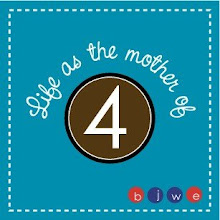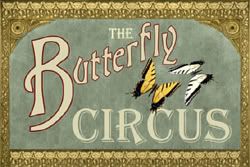Day 2 – Friday Feb
22, 2013 -- Living the Vida
Localisto [Living like a local]
I will NEVER own a rooster. After the 5 am wake up, I
try to drift back to sleep and find myself dreaming of throttling that bird in
the middle of an uhr-rr-hurr-[grkck-hck-gasp…].
My bed is surprisingly not uncomfortable, just very
lumpy. It’s not soft – I’m used to
American beds that are spongy on top.
After breakfast we catch
transportation this morning (our host Sr. Salvador’s brother in his extended
cab pickup) to go to Joya del Ceren (the ‘Mayan Pompeii’). Both brothers
own bus companies, where former school buses are painted bright colors and used
for local bus routes. There were three stops before we went through San
Salvador, the capital city during morning traffic: the middle of the road when
passing a bus (to give the driver a baggie of bills and coins – his
‘paycheck’), down a side street to tell a bus driver (who was sleeping in one
of the seats) his changed route for the day, and to make a payment for
something at a high-walled compound. Everyone talks on their cell phone
while driving.
We then stop at a gas station, and
back up to another pickup, bumper to bumper. A disassembled bus
transmission and assorted parts are slid into the back of our ride, and then we
switch rides. Sr. Salvador now takes us to Joya del Ceren. We are
supposed to meet Nixon & Roxanne (Louis Tobar’s oldest daughter) there, but
Nixon hasn’t finished making his daily batch of cheese yet… so we do the tour of
the museum with Sr. Salvador.
At Joya del Ceren – a peaceful little park – I again pay the
Gringo rate (the entry sign says “foreigners - $3, locals $1”). Sr.
Salvador thinks it’s really strange that there is a different price for
foreigners. He asks the ticket agent why Gringo’s pay more. “Because they
have more money” is the simple response.
(As a pricing professional, this makes perfect sense to me. It’s the simplest form of price segmentation
and a ‘pricing fence’ that I can think of.)
We skirt past the school classes and tour groups and walk
through the site by ourselves. The museum is cool, with interesting pots
and artifacts and diagrams. The place itself is an archaelogical
treasure – a very well preserved ordinary small Maya village from 580
A.D. But the interpretive signs are too much. “…a ceremonial hall
where village elders gathered for important events, possibly involving a
beverage drank for mystical enlightenment” – give me a break, that is just the
village bar. It’s an unimpressive bunch of small Maya mud huts that were
buried by a volcano. But still cool to see how the other half
lived. In some ways, little has changed. Less than an hour later,
we get a call from Nixon and go to meet him at a gas station, to transfer
rides.
We go to lunch, at another archaeology site (a small Mayan temple,
but a site that was occupied since Olmec times, and part of a large Maya
settlement). There is a great energetic
guide who gives an impromptu tour of the museum. And it’s educational – I mention the altar of
sacrifice at the top of the temple, and when Bobby translates, it is apparent
that Nixon’s family didn’t know it was used for human sacrifice. When we
tour the museum, they see the ceremonial knife used to kill the winning team on
the ball court, the box used to burn the heart and blood of captives, and a
large statue of a warrior wearing the inverted human skin of a sacrificed
captive (no, that isn’t armor on those Maya warrior statues – think how that
smelled after a few days). They didn’t know any of this about the
Mayas. I find that odd –I’ve known about
human sacrifice in Central American cultures since before high school. Maybe I just had different interests from my
peers…
After hiking around the temple, we take a ride through the
mountains, coffee plantations, stop in a relaxing little mountain tourist
village for some shopping, and dinner overlooking a volcanic lake at
sunset. A very pleasant day. Then we meet Sr. Salvador at a mall
for another hour-long ride home, stopping of course, for some pupusas along the
way (porque no?}
And I learn several times that my Spanish guidebook has led
me astray – words that mean nothing here, or are wrong (example: they’ve never
heard the Spanish word for ‘shrimp’
that’s in the guidebook). This little book is staying home
manyana. I’ll use my ears.
Today was all about eating. Well, with some driving
and sight-seeing in between.
·
Breakfast: served local style (our host says
“it’s ready,” serves you a plate, and then leaves to do other things.
Bobby explained that sit-down meals are not a local custom.)
o Two
fried eggs, with salsa, with refried beans, tortilla, fresh cheese, really good
juice and rolls
·
Snacks at gas station: Pan dulce (sweet bread) like
a maple-frosted croissant-donut hybrid, with a surprise raspberry filling ($1),
with a really tasty pina colada juice drink ($0.35)
·
Early lunch: yucca with chicharrones (like
sticky mashed potatoes with bacon chunks), and pupusas on the side
o Pupusas
are the local staple: like a stuffed pancake– shape of a tortilla, 5 inches or
so round, but filled like a tamale. Corn or rice dough with cheese or
meat filling, flattened and cooked on a grill. $.50 (bean or cheese) -
$1.00 (for meat filling) each. Served with a mild red sauce and shredded
cabbage & carrots soaked in vinegar. Eaten as finger food. Mui
bueno!
·
Afternoon munchies: green mango chunks (25 cents
a bag), really good gelato ice cream cones ($1), and a fresh coconut with the
top cut off and a straw to drink it ($0.60)
·
Early dinner: ½ carne plate (I wasn’t that
hungry after drinking a coconut) – a small grilled steak, chorrizho sausage
ball, pickled cabbage/cole slaw, with rice and black beans, fresh cheese,
avocado slice and a tortilla ($3.50)
·
Late dinner: 2 cheese and meat pupusas, with a
big pina colada frappe ($3.20)
I’m still full. And
so is my wallet.
After a day in El Salvador, the following sights have become
so common they are no longer a surprise – just to be expected:
·
Many people walking along the roadside.
Sometimes women might have a basket, or sack of rice, balanced on their
head. A man may be leaning forward with a bundle of firewood on the
back of his neck, or a machete slung from his belt.
·
Trucks so overloaded they tilt backward, often
with several people riding on top of the load
·
Small pickups – Toyota, Datsun, Nissan, Mazda…
often with a dozen or more people standing in the back (there is a metal
railing installed about chest high, to keep them from easily falling out)
·
Road side vendors. You can’t go five
minutes in any direction without finding food offered for sale. USA
residential neighborhoods must feel like a wasteland – where’s the food?
·
A private security guard at every gas station,
with a pump-action ‘street sweeper’ shotgun slung at the ready
·
Private security squads, in full military gear
with M-16s, around the banks and government office buildings
·
Barred windows, high walls, razor wire and steel
doors on the haciendas and village entrances
The following sights were still a little startling:
·
Old women wielding machete’s to chop wood
·
A guy on a scooter in the middle of the capital
with a new lawn mower on the back rack
·
A pickup that was so out of alignment you could
see all four tires clearly when behind it as it side-windered down the road
·
Odd low-built carts, piled high with firewood,
being ridden down the mountain road like a BigWheel trike
·
A large pile of mannequin parts in one market
stall in a busy street maket
·
A mural, with very good black-line pictures,
that simply read: Marx, Lenin, Mao, Che
·
The San Salvador LDS temple, an oasis of calm
with splendidly clean grounds, new, and wealthy, a bright light amidst a sea of
thriving poverty
And then there are Bobby’s comments each day about how he
recognizes immediately the ‘scent of El Salvador’: It’s a slightly pungent mix
of aromatic wood smoke, road dust, and flowers, with a hint of burning garbage.
He’s right – it’s distinctive.
Today I am left with something to ponder: our hosts don’t
know me, they work 6-7 days a week yet they drop everything and take a day off
to drive Bobby and I around to see the sights. They also insist on paying
for us - always for the first meal with us, and often for everything
else. We have to work to pay our own way. Would I do the
same, if they came to visit me in Boston?
Tomorrow… moto tour.
Viva la vida commo localisto.






